Market
Tron Meme Coins, Hamster Kombat, and More

This week, the crypto sector has been brimming with intriguing developments, from internal conflicts impacting airdrops to rumors of regulatory changes in China. However, Tron meme coins were the talk of the town, dominating the headlines.
That being said, the broader crypto market is attempting a recovery. Bitcoin (BTC) is trading at around $61,000, up by nearly 5% in the past seven days. Cardano (ADA) and BNB remained the top performer amongst the top 10 largest crypto assets based on market capitalization.
As of writing, ADA is trading at $0.38, up by 11% in the past seven days. Meanwhile, BNB is trading at $576, up by 10.5% in the same time frame.
Hamster Kombat Internal Conflict
The highly anticipated Hamster Kombat airdrop was shrouded in uncertainty amid internal disputes. Tensions between the game’s developers and investor AD.RU had escalated, jeopardizing the HMSTR token’s future.
Allegations of profit withholding by the game’s creators against AD.RU, who claim a role in the game’s development and funding, have led to legal threats. There were fears that the ongoing conflict may cause an indefinite delay in the airdrop, which was initially scheduled for July.
However, the Hamster Kombat representatives claim that there were some misunderstandings, which are now resolved.
The project’s response has been to deny AD.RU’s involvement in critical decision-making processes and to assert that Hamster Kombat was developed by a diverse, international team without direct investor influence. Despite these assurances, the community remains on edge, with the project’s market perception and future viability at risk.
“We’ve had to get involved in dealing with a situation involving several entities and an investment fund that was led to believe they had a stake in Hamster Kombat. We can now confirm that the misunderstanding has been resolved. Hamster Kombat was built and developed by a distributed international team with no investors. Our primary focus is building our ecosystem and conducting the airdrop,” Hamster Kombat representatives told BeInCrypto.
Read more: Top 8 Hamster Kombat Alternatives in 2024
Tron Embraces Meme Coin Trend with SunPump
Tron’s blockchain has catapulted into the spotlight this week due to its meme coin sector, driven by the SunPump platform. SunPump has facilitated the launch of nearly 32,000 meme coins, generating over 12.8 million (~$2 million) TRX in revenue.
Justin Sun, the founder of Tron, is bullish on the platform’s potential, noting that Tron’s deep liquidity pools—bolstered by $60 billion in TRON USDT—make it an ideal ecosystem for meme coins. Sun predicts that the platform will soon support a meme coin with a market capitalization exceeding $1 billion.
On Wednesday, Tron saw its highest single-day revenue from meme coin activities, with over 3.6 million TRX spent on creation and trading. SunPump’s growing traction showcases its ambition to outpace rival platforms like Solana’s Pump.fun.
Read more: 7 Hot Meme Coins and Altcoins that are Trending in 2024

Spotlight on Emerging DePin Projects from IoTeX
IoTeX’s recent announcement of its Surf Accelerator Cohort has introduced several promising DePin (Decentralized Physical Infrastructure Network) projects. These projects are:
- Nubila Network: It is creating a blockchain focused on environmental, social, and governace (ESG) issues.
- Qualoo Network: It is mapping internet qualtiy in real-time through DePin.
- SWEATEMPLE : An AI-driven fitness platform.
- SCANNIT: The project aims to leverage DePin model to promote financial digital identity ownership.
- Magma Protocol: A stablecoin project to support DeFi and DePin growth on IoTeX.
- Bedrock: It is building multi-asset restaking protocol.
- Quenta: A derivatives decentralized exchange, focusing to become a liquidity hub for DePin derivatives.
- Loxodrome: Another DePin project, aiming to become next-generation DEX liquidity hub.
- PinSwap: It utilizes AI to optimize trading and liquidity on the IoTeX blockchain.
These projects, though still in their early stages, represent the diverse applications of DePin technology. However, there are certain risks involved, and hence, market participants should practice caution.
Read more: What Is DePIN (Decentralized Physical Infrastructure Networks)?
Is China Reconsidering Its Crypto Ban?
Over the last weekend, speculation about China potentially reconsidering its ban on cryptocurrencies has captured attention. Rumors started swirling following a cryptic post by Justin Sun, who hinted at an unbanning of crypto in China. This post ignited discussions and excitement within the crypto community, as China represents one of the largest markets for digital assets.
Further fueling these speculations, Chase, co-founder of the Solana Virtual Machine blockchain Molecule, commented that China had “shadow-unbanned” cryptocurrencies years ago, noting that top crypto exchanges like Binance and Bybit are accessible to Chinese users. Such comments suggest that while official policies may not have changed, the practical approach to enforcement might be more lenient, allowing for substantial, albeit unofficial, crypto activities within the country.
“Users can freely register an account today on top exchanges like Binance and Bybit. So, the whales have always been around, but retail users who do not want to step into the grey area will come in. The question is the scale of user influx, and more importantly, the innovation that a move like this can drive given the regulation tailwind,” Chase commented.
The potential easing of regulations could open up vast opportunities for both local and international crypto businesses, possibly leading to a resurgence of mining activities and increased crypto trading within the region. If these changes are implemented, they could stimulate innovation and attract investments, bolstering the global crypto market.
Since last month, PayPal’s PYUSD stablecoin has seen unprecedented growth, emerging as a central topic in the stablecoin sector. After its launch on the Ethereum blockchain in August 2023, PYUSD had steady growth. However, its expansion onto the Solana blockchain in May 2024 has catapulted its adoption and utility to new heights.
PYUSD’s integration with Solana has been particularly transformative, leveraging Solana’s high-speed and low-cost transactions to attract a broad user base. Within just a month of its Solana debut, PYUSD’s supply surged by over 45%, bringing its total circulation close to $1 billion.

This rapid increase is partly attributed to the attractive yields offered on Solana-based DeFi platforms like Kamino and Drift, which provide nearly 20% annual returns for deposits of PYUSD.
The stablecoin’s success sheds light on the PayPal’s strategic foresight in expanding into blockchain technology, aiming to bridge traditional finance with decentralized finance (DeFi). PYUSD stands out due to its backing by PayPal, assuring users of the security and stability of their digital assets.
Disclaimer
In adherence to the Trust Project guidelines, BeInCrypto is committed to unbiased, transparent reporting. This news article aims to provide accurate, timely information. However, readers are advised to verify facts independently and consult with a professional before making any decisions based on this content. Please note that our Terms and Conditions, Privacy Policy, and Disclaimers have been updated.
Market
Bitcoin ETFs Could Overtake Gold ETFs by End of The Year

Spot Bitcoin exchange-traded funds (ETFs) in the US are nearing a major milestone. They are set to become the biggest BTC holders in the world, even surpassing the amount held by Bitcoin’s creator, Satoshi Nakamoto.
Additionally, they are catching up to gold ETFs in total net assets.
Bitcoin ETFs on The Verge of Surpassing Satoshi Nakamoto’s BTC Stash
Since their launch in January, US spot Bitcoin ETFs have grown significantly. According to crypto analyst HODL15Capital, these funds now hold about 1.081 million Bitcoin, just below Nakamoto’s estimated 1.1 million.
Satoshi Nakamoto, the anonymous creator of Bitcoin, is believed to own approximately 5.68% of the total Bitcoin supply. These holdings, valued at over $100 billion, place Nakamoto among the world’s wealthiest individuals — if they are alive and a single person.
However, Bloomberg’s Senior ETF Analyst, Eric Balchunas, pointed out that ETFs are now 98% of the way to overtaking Nakamoto. He predicted that if the current pace of inflows continues, this could happen by Thanksgiving.
“US spot ETFs now 98% of way there to passing Satoshi as world’s biggest holder. My over/under date of Thanksgiving looking good. If next 3 days are like the past 3 days flow-wise it’s a done deal,” Balchunas stated.

SoSoValue data shows inflows into these ETFs grew by around 97% week-on-week to $3.3 billion over the last five trading days, with BlackRock’s iShares Bitcoin Trust (IBIT) contributing $2 billion. This surge coincides with the introduction of options trading for these products, which many believe is attracting more institutional investors.
Meanwhile, Bitcoin ETFs are also narrowing the gap with gold ETFs, which currently hold $120 billion in assets under management (AUM). According to Balchunas, Bitcoin ETFs manage $107 billion and could overtake gold ETFs by Christmas.
These bullish predictions reflect Bitcoin’s exceptional performance in 2024. The top cryptocurrency has surged nearly 160% since January, trading near the $100,000 landmark. In addition, its $1.91 trillion market capitalization now exceeds that of silver and major corporations like the state-owned oil company Saudi Aramco.
However, BTC still lags behind gold, which remains the world’s largest asset with a market capitalization of more than $18 billion.
Disclaimer
In adherence to the Trust Project guidelines, BeInCrypto is committed to unbiased, transparent reporting. This news article aims to provide accurate, timely information. However, readers are advised to verify facts independently and consult with a professional before making any decisions based on this content. Please note that our Terms and Conditions, Privacy Policy, and Disclaimers have been updated.
Market
Why Ethereum Price May Fall Under $3,000
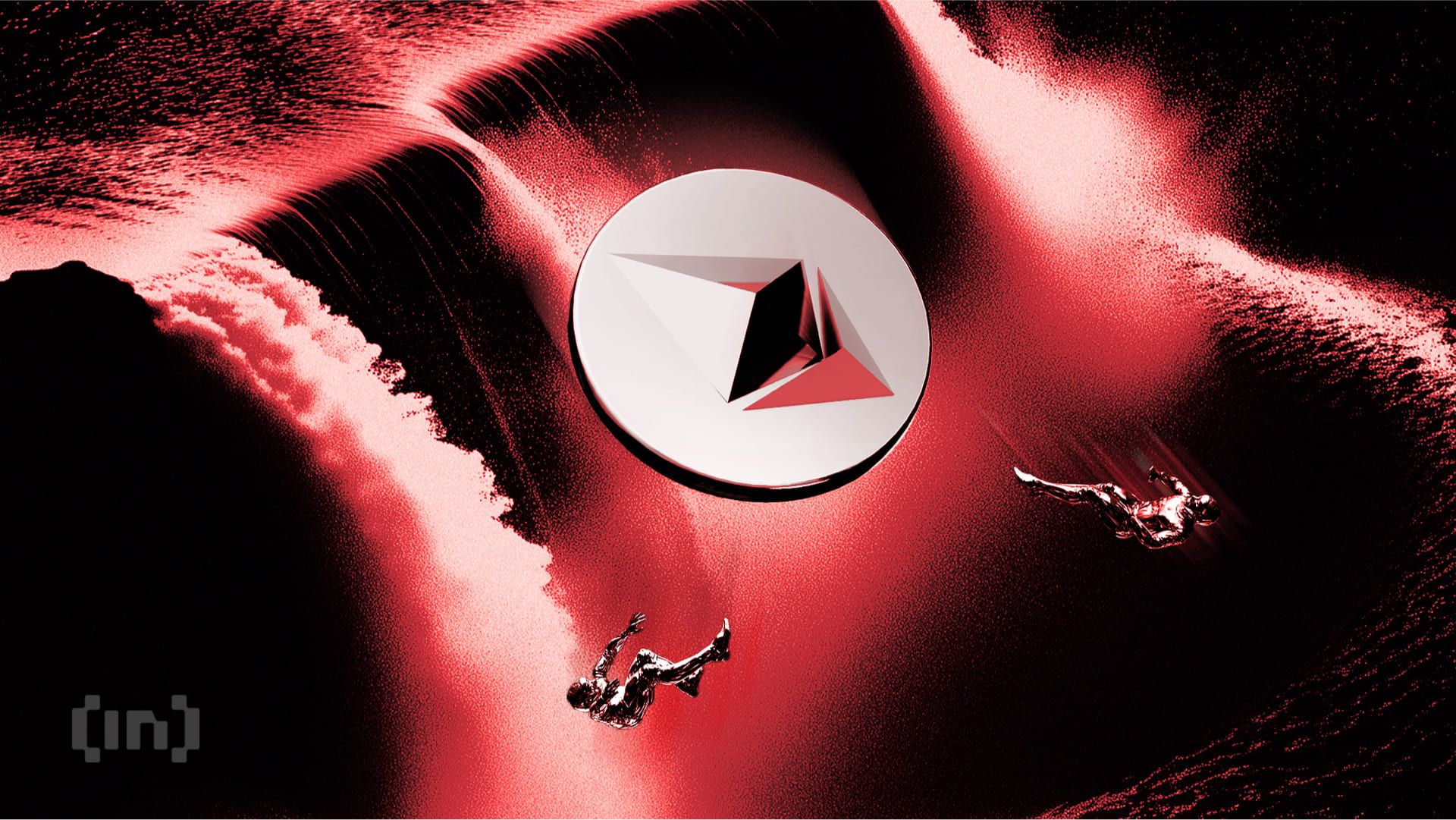
Ethereum (ETH) is currently facing significant downward pressure, with its price declining by 3% over the past 24 hours. This bearish trend could push ETH’s price below the critical $3,000 price level.
This analysis examines the factors contributing to this likelihood.
Ethereum Sellers Re-Emerge
An assessment of the ETH/USD one-day chart has revealed that the coin’s moving average convergence divergence (MACD) indicator is forming a potential death cross. As of this writing, the coin’s MACD line (blue) is attempting to fall below its signal line (orange).
This indicator measures an asset’s price trends and momentum and identifies its potential buy or sell signals. A MACD death cross occurs when the MACD line (the shorter-term moving average) crosses below the signal line (the longer-term moving average), indicating a bearish trend or momentum reversal. This signal suggests that selling pressure is increasing, and the asset’s price could decline further.
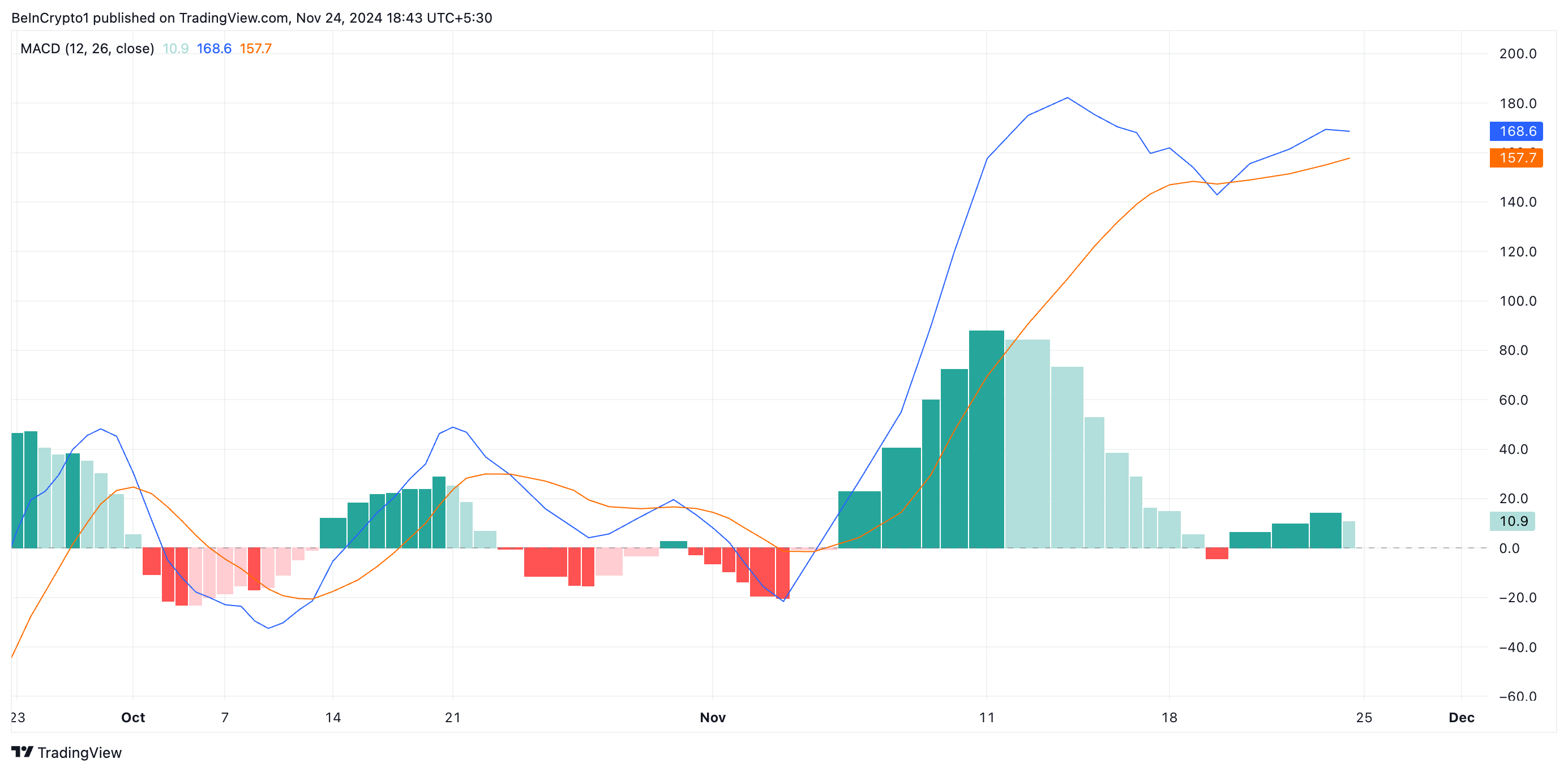
ETH’s rising Aroon Down Line confirms this strengthening bearish pressure. It currently sits at 78.57%, confirming that the decline in ETH’s price is gaining momentum.
The Aroon Indicator evaluates the strength of an asset’s price trend through two components: the Aroon Up line, which reflects the strength of an uptrend, and the Aroon Down line, which reflects the strength of a downtrend. A rising Aroon Down line indicates that recent lows are occurring more frequently, signaling growing bearish momentum or the start of a downtrend.
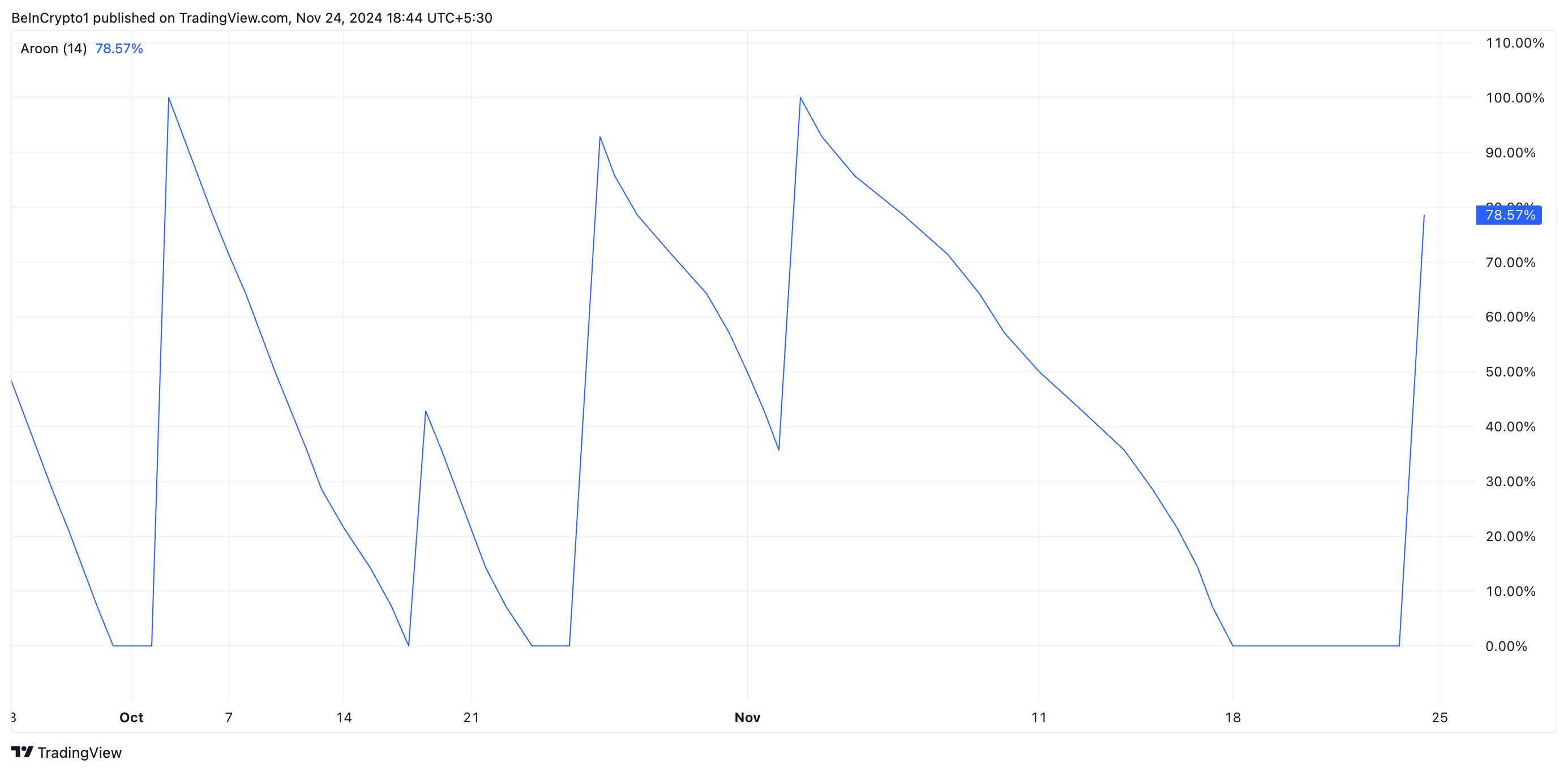
ETH Price Prediction: Key Support Level To Watch
ETH currently trades at $3,333, resting above the support formed at $3,203. This level is crucial because a decline below it will cause ETH to exchange hands under $3000. According to readings from the coin’s Fibonacci Retracement tool, the Ethereum price will drop to $2,970 if this happens.
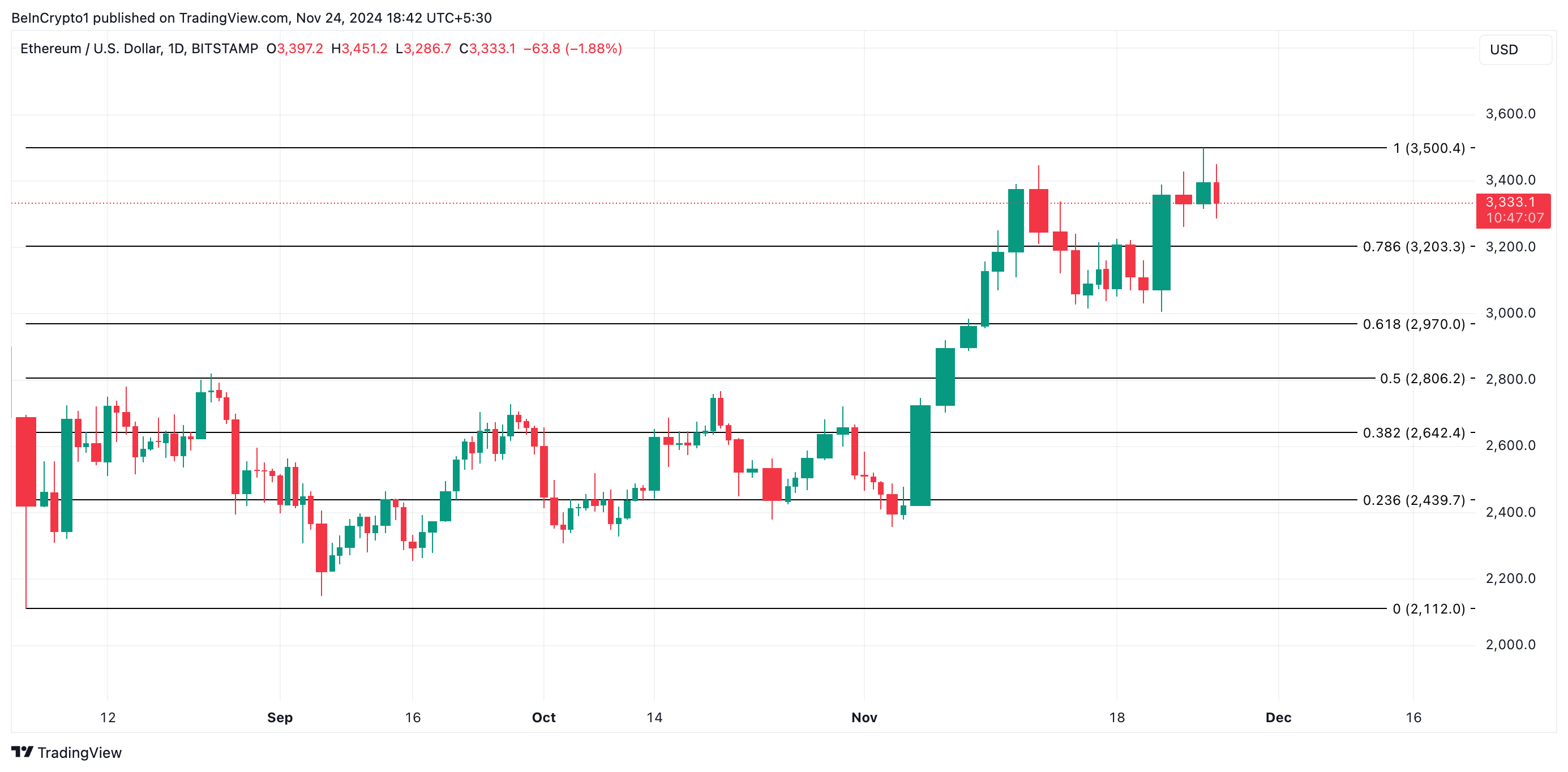
However, a resurgence in the demand for the leading altcoin will invalidate this bearish thesis. If this occurs, Ethereum will rally toward $3,500.
Disclaimer
In line with the Trust Project guidelines, this price analysis article is for informational purposes only and should not be considered financial or investment advice. BeInCrypto is committed to accurate, unbiased reporting, but market conditions are subject to change without notice. Always conduct your own research and consult with a professional before making any financial decisions. Please note that our Terms and Conditions, Privacy Policy, and Disclaimers have been updated.
Market
Cantor Fitzgerald Deepens Tether Ties With 5% Stake Acquisition

Cantor Fitzgerald, a prominent US financial services firm, is expanding its alliance with Tether, a key player in the digital asset industry and the issuer of the world’s largest stablecoin.
According to reports, the firm has agreed to acquire a 5% stake in Tether as part of a broader collaboration that includes Bitcoin-backed lending initiatives.
Tether Mints $13 Billion USDT as Cantor Fitzgerald Deepens Tie
The acquisition talks, reportedly finalized in 2023, valued the 5% stake at approximately $600 million. This partnership positions Tether to gain strategic advantages, particularly as Cantor Fitzgerald’s CEO, Howard Lutnick, takes on his new role as Secretary of Commerce under President-elect Donald Trump.
Market observers suggest that the nomination raises the possibility of enhanced regulatory support for Tether, which has faced scrutiny over potential violations of sanctions and anti-money laundering regulations—a claim the company has denied. However, Lutnick has promised to step down from his positions at Cantor Senate confirmation.
Beyond the ownership stake, Tether is expected to support Cantor Fitzgerald’s Bitcoin lending program, a multi-billion-dollar initiative. The program aims to offer loans backed by Bitcoin, initially funded with $2 billion, with plans for significant future expansion.
Meanwhile, Cantor Fitzgerald is already a critical partner for Tether, reportedly holding a significant portion of the stablecoin issuer’s $134 billion reserves in US Treasury bills.
As Cantor Fitzgerald deepens its involvement with Tether, the firm has continued its aggressive token minting. On November 24, blockchain analytics platform Lookonchain reported that stablecoin company minted an additional $3 billion USDT, bringing the total minted since November 8 to $13 billion. This expansion has pushed the total supply of USDT to approximately $132 billion.

The increased USDT supply may reflect the growing demand for stablecoins, often used to hedge market positions or facilitate crypto transactions without converting to fiat. This liquidity influx could reduce volatility and enhance price stability across the digital asset market.
This surge in USDT supply coincides with a broader market rally led by Bitcoin and other assets such as Dogecoin and Solana, signaling renewed investor confidence in the crypto ecosystem.
Disclaimer
In adherence to the Trust Project guidelines, BeInCrypto is committed to unbiased, transparent reporting. This news article aims to provide accurate, timely information. However, readers are advised to verify facts independently and consult with a professional before making any decisions based on this content. Please note that our Terms and Conditions, Privacy Policy, and Disclaimers have been updated.
-

 Altcoin20 hours ago
Altcoin20 hours agoBTC Continues To Soar, Ripple’s XRP Bullish
-

 Market17 hours ago
Market17 hours agoWhy a New Solana All-Time High May Be Near
-
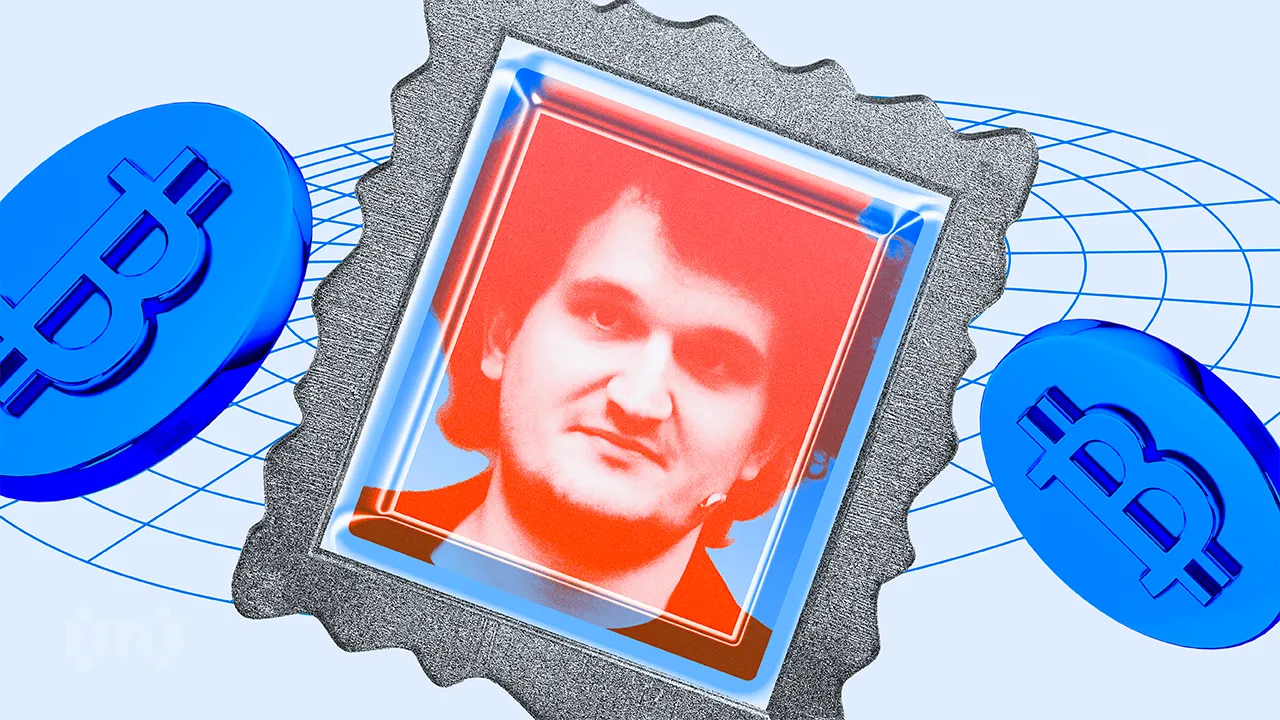
 Market14 hours ago
Market14 hours agoWinklevoss Urges Scrutiny of FTX and SBF Political Donations
-

 Bitcoin13 hours ago
Bitcoin13 hours agoBitcoin Correction Looms As Analyst Predicts Fall To $85,600
-

 Bitcoin12 hours ago
Bitcoin12 hours agoAI Company Invests $10 Million In BTC Treasury
-
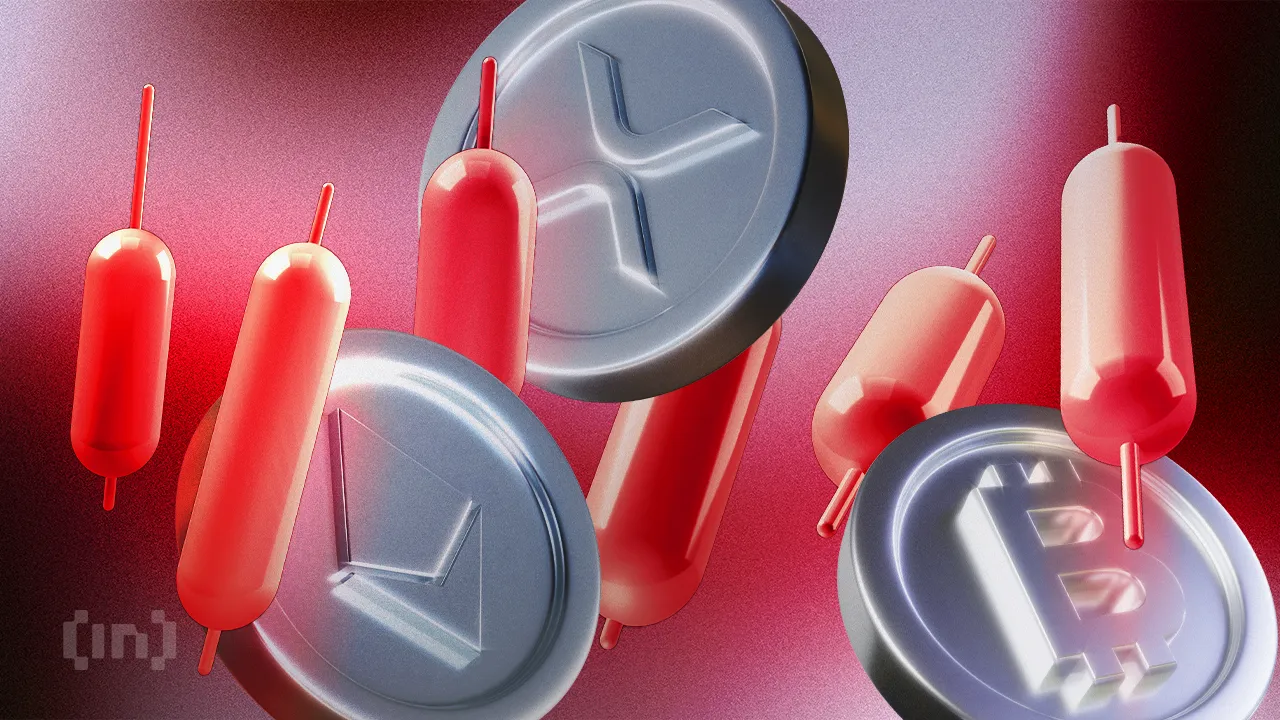
 Market12 hours ago
Market12 hours agoIs the XRP Price Decline Going To Continue?
-

 Market11 hours ago
Market11 hours agoToken Unlocks to Watch Next Week: AVAX, ADA and More
-

 Bitcoin14 hours ago
Bitcoin14 hours agoBitcoin Price Is Decoupling From Gold Again — What’s Happening?























